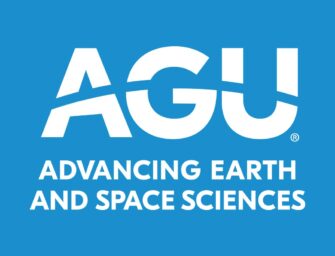In memoriam: Eugene Parker
AGU mourns the passing of solar astrophysicist Eugene N. Parker, a pioneer in the study of solar wind, namesake of NASA’s Parker Solar Probe and an active member of the AGU community.
Dr. Parker was an AGU Fellow, and winner of the John Adam Fleming Medal in 1968 and the William Bowie Medal, AGU’s highest honor, in 1990. He also served as chair of the Bowie Medal committee.
In addition, AGU’s Space Physics and Aeronomy section presents a lecture at AGU Fall Meeting in honor of Dr. Parker. The Eugene Parker Lecture is presented two out of every three years to a space scientist who has made significant contributions to the fields of solar and heliospheric science.
In presenting the 2021 Parker Lecture at the 2021 AGU Fall Meeting, Dr. James A. Klimchuk, of NASA’s Goddard Space Flight Center, noted the impact that Dr. Parker had on his career and on the entire field of heliophysics. Essentially, Dr. Parker’s work on coronal heating laid out the basic picture that has guided scientists’ thinking for the last four decades.
“It is absolutely staggering how much he has done for our field,” Klimchuk said. “He has made seminal contributions in so many areas.”
Dr. Parker was born in Houghton, Michigan, in 1927. After receiving a B.S. degree from Michigan State College in 1948 and a Ph.D. from the California Institute of Technology in 1951, he held various positions at the University of Utah from 1951 to 1955. In 1955, he joined the University of Chicago.
In 1958, Dr. Parker published his theory of the solar wind, in which the solar corona expands supersonically to the outer reaches of the solar system, according to a citation about AGU’s Parker Lecture. Prior to Dr. Parker’s work, the existence of a continuous, but slight, flow of particles from the Sun was suggested by circumstantial evidence. The idea of such a vigorous, dense, and dynamically complex outflow was so radical for its time that it drew criticism and disbelief from most of the scientific community, according to the citation.
Subsequent observations confirmed Dr. Parker’s theory. Studying the detailed structure and dynamics of the solar wind animated much of the scientific exploration of the inner solar system during the 1960s, and the concept―extended to other stars―became one of the most important foundations of modern astrophysics, according to the citation.
Dr. Parker was elected to the National Academy of Sciences and received the National Medal of Science. He was recognized with the Henry Norris Russell lectureship, the George Ellery Hale Award from the American Astronomical Society, the Sydney Chapman Medal and the Gold Medal of the Royal Astronomical Society, the Bruce Medal, the Kyoto Prize, the James Clerk Maxwell Prize, and the Crafoord Prize in Astronomy.
While we mourn Dr. Parker’s passing, we honor his legacy and contributions, which have endured for decades and will continue to influence the AGU community for many years to come.



There are no comments
Add yours